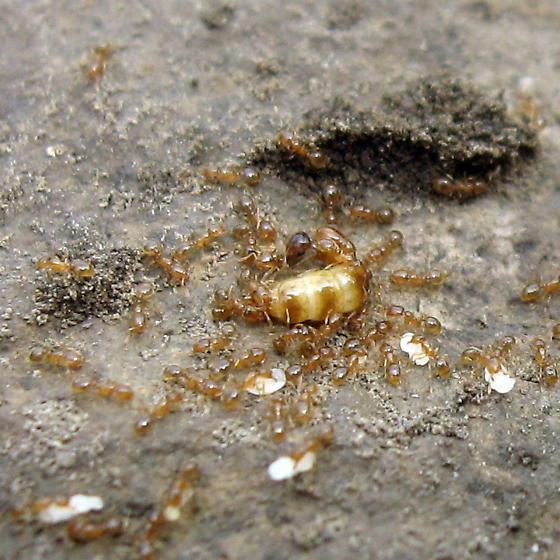Nutrition
In general, ants normally eat nectar or seeds (National Geographic, 2013). Thief ants are unique species that are also known for their desire for high protein foods. Their diet consists of high protein diet (Texas A&M University,2010). Some of these high protein foods include grease, meat, and oil (Hayes, 1920). The craving for meat by the Solenopsis molesta species, is the reason why they will often attack other insects and animals. They consume other larvae and pupae as well as stolen goods from other species (Texas A&M University,2010). For example, Solenopsis molesta species can consistently be observed carrying stolen bug eggs and moth larvae to devour (McColloch and Hayes, 1916). Farmers consider thief ants as huge predators to their crops, especially corn and other vegetables. Thief ants interfere with germination of seeds when they are planted. They are known to attach and consume the inside kernels of corn and other seeds when it is planted to consume the rich oily nutrition (McColloch and Hayes, 1916) Also, unlike most ant species, Solenopsis molesta often do not store food in their nests. They are consistently hunting for food and consume it when it becomes available (McColloch and Hayes, 1916). Find more out about this in our interactions section. Thief ants also consume a variety of berries, honeydew and ripe fruit; they are often attracted to the sweet nectar and high in sugar (Hayes, 1920).
